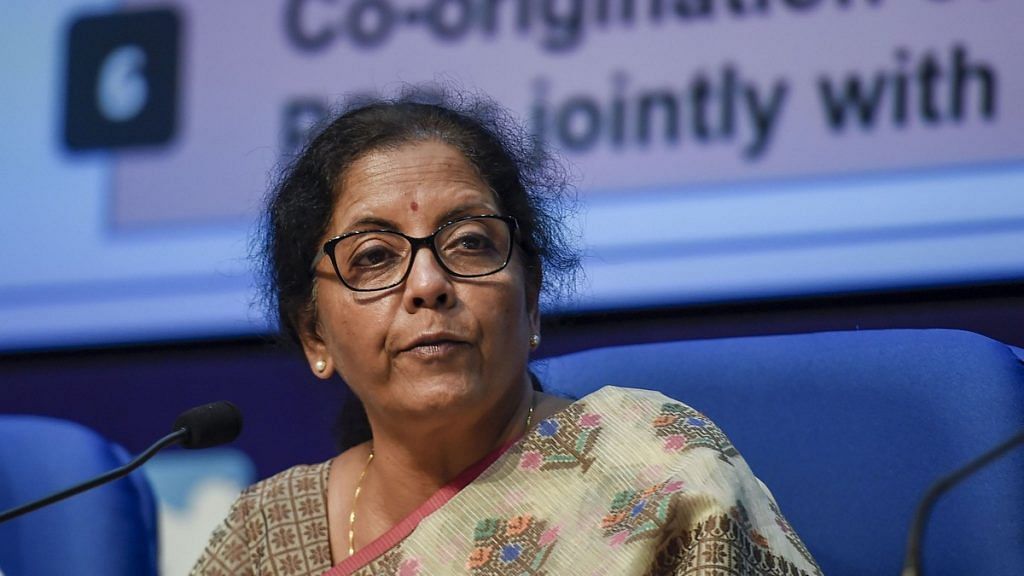A string of bad news is hitting the Indian economy. And it’s time for the Narendra Modi government to turn its attention to a slowdown-mukt Bharat, not just a Congress-mukt Bharat.
The BJP’s biggest threat and challenge today is not the opposition, but the angry jobless youth on the street and the faltering economy.
The GDP is at a seven-year low at 5 per cent. The rupee is down to the year’s lowest. India’s largest passenger vehicles manufacturer, Maruti Suzuki India Limited, has announced halting of operations for two days at two of its plants. The slowdown in domestic vehicle sales, combined with production cut in China, will affect the global passenger vehicles market sharply. The Services PMI index is falling. Weak domestic demand for steel and fall in global growth fuelled by the US-China trade war will hit the profit margins of the steel industry, already in a bad shape.
But amid all these bad news, global rating agencies are busy adjusting their GDP forecast for India to less than the estimated six per cent.
So, are we slowly but surely walking into the big bad recession? By the look of it, one can be certain about the economic meltdown that some of the market watchers have been predicting for long. Recession, like terrorism, has no empirical definition. It means different things to different economies. Economic slowdown need not necessarily be a recession. But nevertheless, there is an urgent need for the Modi government to step in and take charge of the situation. Being in a denial mode will help neither the economy nor the government.
Also read: Economy tweaks & banks consolidation not enough, we need serious structural reforms
The 2008 recession
With due respect to the Biblical adage, it is time to say ‘blessed is the economy that is in recession, for it can revive’. But prayers and press conferences alone will not help it.
In 2008-2009, the Indian economy was very much part of the ‘Great Asian Recession’, which made many world economies press the panic button. The trigger for this slowdown was the US banking crisis. To ward off the recession, the US Federal Reserve, equivalent to our RBI, announced as many as 7 rate cuts to pump in money into the credit system leading to indiscriminate lending. The “eat now, pay later” model not only brought down the US banks, but laid the foundations for a global economic meltdown.
India, which had witnessed a fairly decent economic atmosphere from 2001 to 2006, felt the tremors of the global economic crisis, but lived to see a better day mainly because of low exports (15 per cent of GDP) and good industrial production output to about (7.8 per cent).
Although the economy did not ‘bounce back’, as predicted by then Prime Minister Manmohan Singh, the conservative policies of the government kept the crisis from turning into a major meltdown.
So, what has changed in 2019 that is making Finance Minister Nirmala Sitharaman lose her sleep?
Also read: Instead of mocking Manmohan Singh, heed his advice on economy, ally Shiv Sena tells BJP
The current problem
According to analysts, the 2008-2009 crises continued till 2014, but eased a little after the massive political victory of Narendra Modi. The new Modi government raised hopes of an economic recovery, quantum jump in production, ease of doing business, massive tax reforms and, above all, jobs and employment to the teeming millions. The promise of 10 million jobs had a magical effect on the youth and the industry alike.
Barely two years into the business of governing, the Modi government in 2016 embarked on a much-needed massive war on corruption and black money economy resulting in demonetisation.
Demonetisation was timely and well-thought-out, but the negative fallout seems to be continuing for more than the expected time frame.
Close on the heels of demonetisation came the roll-out of GST, another corrective measure that promised to spur trade and growth in the long run, but effectively brought the economy to a standstill in the short term. What followed was a series of events leading to stagnation, lull in production activities and gradual fall in demand.
Then came the NBFC crisis, signalled by the collapse of IL&FS, resulting in a knee-jerk reaction by the finance ministry. Overarching restrictions on all forms of non-banking credit institutions and systems sent wrong signals to the lenders, seriously impacting the investment climate and denting lenders’ confidence. This had a cascading effect on credit availability in the MSME sector and market sentiment. The Make in India scheme, which should have actually been on a flight path, has now withdrawn into a shell.
Also read: New data explains the unwavering support for Narendra Modi despite sagging economy
Before a meltdown
Measures like bank mergers, easing credit and announcing sops for industries could bring relief in the short term, but too much credit without judicious norms and utility avenues can worsen the situation. Additionally, external factors like fluctuating oil prices, US-China trade war, overall sluggishness in major economies and spikes in global economic fault lines could impact Prime Minister Modi’s agenda of jobs for all and a $5-trillion economy dream.
The finance minister should shed her attitude of stonewalling questions on tax terrorism, regressive anti-business decisions and start engaging with the industry, trading community and experts with an open mind.
The author is a member of the National Executive Committee of the BJP and former editor of Organiser. Views are personal.
